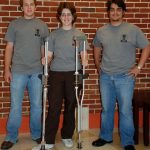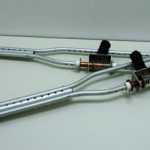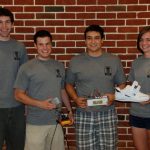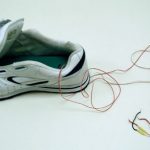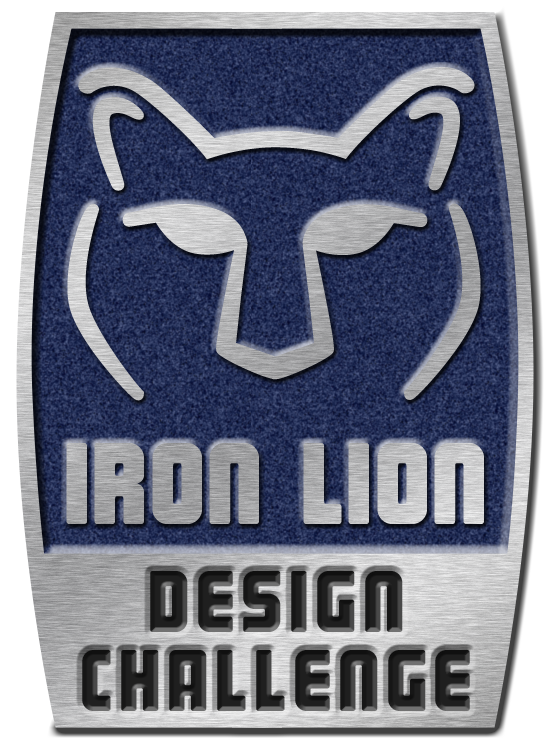
June 23-30, 2008
University Park, PA
In this inaugural year, 11 students, 6 faculty members, and 5 industry collaborators came together to design adaptive and co-adaptive medical devices. The students, from various backgrounds and levels of experience, divided into three teams to work on a specific challenge.
Team 1: Improved NOTES device
A new type of endoscopic surgery called NOTES, or Natural Orifice Transluminal Endoscopic Surgery, allows for endoscopic surgical operations beyond endoscopic exploration. During a NOTES procedure, an endoscope is passed through a natural orifice, such as the mouth, and then through an internal incision in an organ, such as the stomach, to perform the surgery.
Existing instruments used for NOTES procedures have not yet been developed to their full extent, and so the challenge for this team was to design a new endoscopic tool that could spread tissue using an opening and closing device on the forceps attached to the end of the instrument. The team also created a locking device for stiffening the endoscope to allow for better manipulation of tissue and organs. According to the team, the biggest challenge was working on a micro scale, where the instrument could be a maximum of only 3.2 millimeters in diameter.
Team 2: Improved crutches
Traditional axillary crutches have existed in their current form for hundreds, if not thousands, of years. However, recent efforts have investigated ways of improving the design of axillary crutches with two primary goals in mind: reducing injury due to impact, or allowing for the reclamation of energy through the swing gait. Crutches with springs have the possibility of offering improvement in both of these areas. While the benefit of energy reclamation may be marginal, the benefit of increasing the comfort and reducing risk of injury is very significant. Thus, the team sought to design a so-called “springy” crutch to reduce the risk of injury to the user due to “jerk,” which is a measure of the intensity of impact.
The team developed a prototype that addressed two areas of an axillary crutch: the leg and the handle. Two “nested” springs were added to the leg to provide variable springiness to the entire crutch. Various studies have shown the benefit of adding springs to the leg, but have shown that adding springs may contribute to users feeling unstable while using the crutch. The idea behind using nested springs is to provide variable springiness so that when the user applies more force above a certain threshold, the springs provide more resistance, giving the impression of increased stability.
The prototype also addressed improvements to the handle. Since most injuries resulting from crutch use occur at the wrists and arms, the handle of the crutch was modified in a few ways. First, springs were added to the handle to allow for increased shock absorption. Second, the handle was inclined 15 degrees from the horizontal to provide a more natural position for the wrist. Third, the handle was modified to allow it to swivel outward with respect to the crutch, again with the intent of providing a more natural posture for the wrist during use.
Team 3: Aids for rehabilitation patients with reduced leg strength
Physical rehabilitation for patients with reduced leg strength or leg injuries can be long and difficult. Dr. Everett Hills and physical therapist Jan Grattan, both from the Hershey Medical Center, discussed their experiences and concerns regarding this sort of rehabilitation. According to Dr. Hills and Ms. Grattan, two devices that may aid patients in recovery are leg braces that provide the patient with comfort and stability while standing up, and a weight-sensing device that alerts the patient when he or she has applied the appropriate amount of weight to the injured leg. Applying weight to the leg is critical to the healing process, but applying too much may cause setbacks. Therefore, providing information to the patient regarding the appropriate amount of weight would be hugely beneficial.
After visiting a manufacturer of leg braces and researching currently available products and products in development, the team opted not to pursue an improved brace design and instead design a weight-sensing device. Since there is already a large effort in developing better leg braces, the team felt their time would be much better spent developing a simple, affordable weight-sensing device, since no such products are currently available.
Judges, faculty, and industry collaborators
Each team was judged by a panel of faculty and industry collaborators. First place went to the NOTES device, second to the crutches, and third to the weight-sensing device. The Challenge would not have been possible without the efforts of Penn State faculty, including Prof. Matt Parkinson, Prof. Mary Frecker, Prof. Sam Hunter, Prof. John Lamancusa, Prof. Steve Piazza, and Prof. Tim Simpson. The Challenge directors and participants would also like to thank Jaime Blansett, Jan Grattan, Dr. Everett Hills, and Dr. Eric Pauli, of Hershey Medical Center, as well as Maureen Mulvihill, of PRI, Inc.
Funding for the Iron Lion Design Challenge came from the School of Engineering Design, Technology, and Professional Programs at Penn State; the Penn State College of Engineering; and the National Science Foundation (award #0729386).

